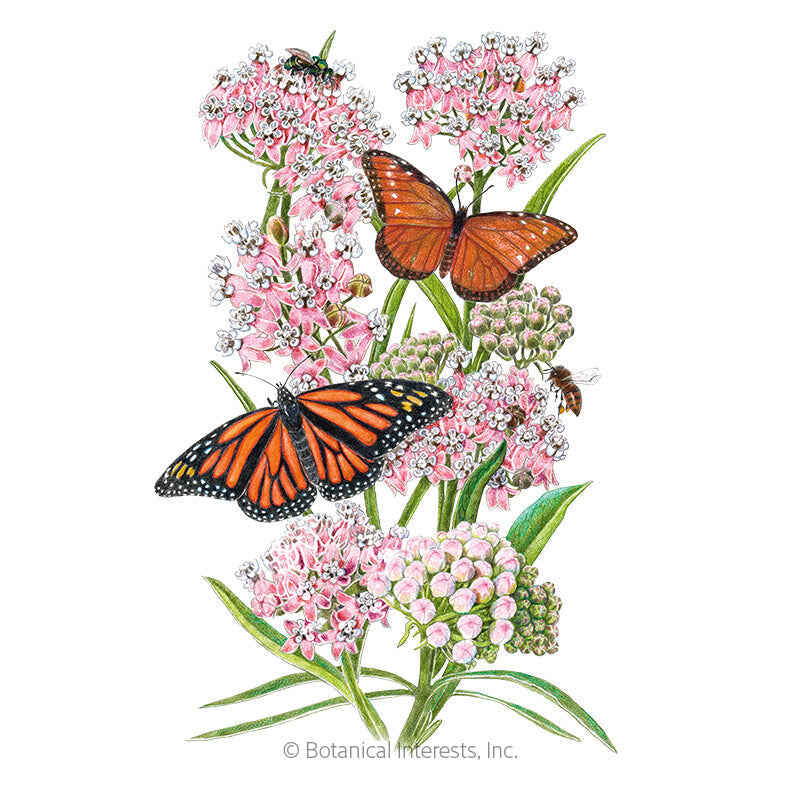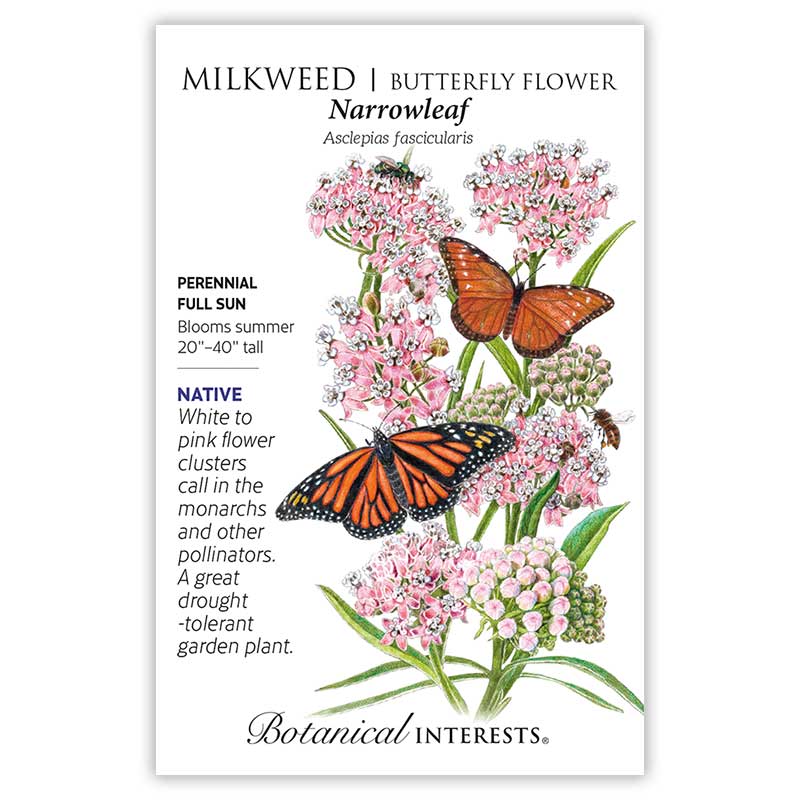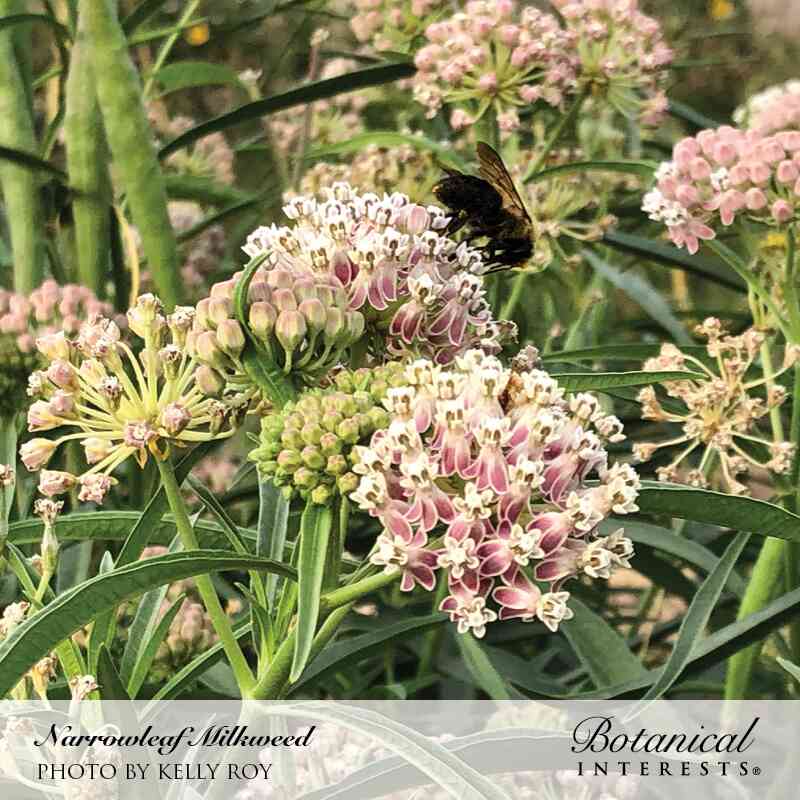



- Variety Info
- Sowing Info
- Growing Info
- Learn More
Variety Info
Family: Apocynaceae
Native: Western U.S. and Northern Mexico
Hardiness: Perennial in USDA zones 6–10
Exposure: Full sun
Bloom Period: Summer
Plant Dimensions: 20"–40" tall, 12" wide
Variety Info: Individual white to pink or lavender, ½" flowers in clusters
Attributes: Attracts Butterflies, Attracts Pollinators, Deer Resistant, Drought Tolerant

Sowing Info
When to Sow Outside: 2 to 4 weeks before your average last frost date, or in the fall for spring germination.
When to Start Inside: 6 to 8 weeks before your average last frost date.
Days to Emerge: 14–28 Days
Seed Depth: Press into surface
Seed Spacing: A group of 3 seeds every 10"–12"
Thinning: When 3" tall, thin to 1 every 10"–12"
Your hardiness zone is
Growing Info
Harvesting: For longest vase life, cut flowers when 1/2-2/3 of petals are open. Sear the stem end with a flame to prevent the sap from sealing the stem. Wear gloves; milkweed sap can cause skin and eye irritation and can be toxic if ingested. Change vase water often.
Special Care: Once this plant becomes established, it is difficult to transplant because of its deep taproot. Plant it where it will not be disturbed. Spreads readily through underground rhizomes. Plant in garden where expanding growth is desired, or growth can be controlled, or in containers. Deadheading flower clusters before pods set will prolong flowering period and prevent reseeding.





